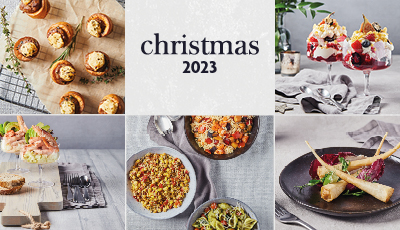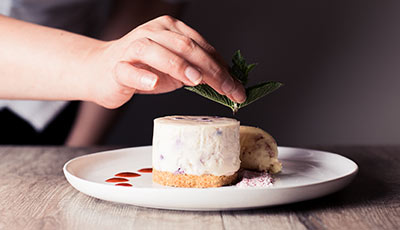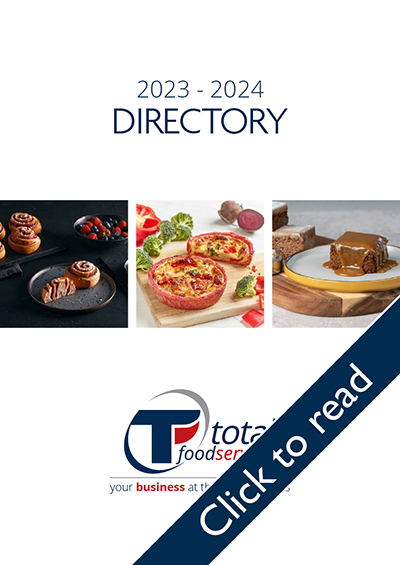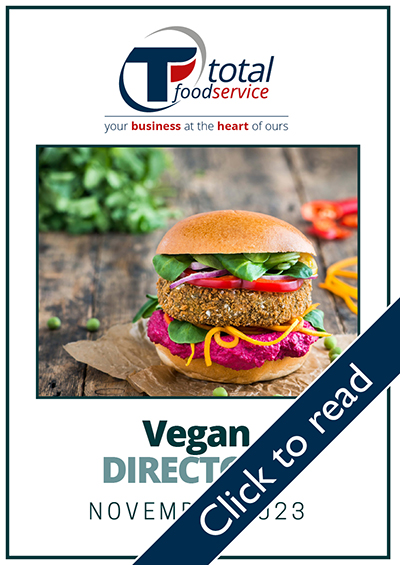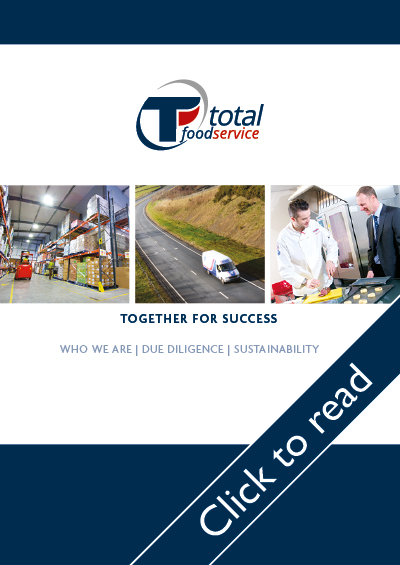Planning the Festive Season

It may only be September, but Christmas is starting to creep up on us and signs are already beginning to appear. From posts on social media to the Christmas Aisle being fully stocked in the supermarkets, the festive season is certainly approaching.
As a chef, preparing for the festive season can be hard as Christmas is one of the busiest times of the year in the hospitality industry. However, when done properly and with the right planning, it can also be one of the most profitable periods and can be enjoyable for both the staff and the people who use your service. And, if you get it right, there’s no better compliment than taking repeat bookings for the next festive season.
Making the most of the festive period starts with understanding your service demands, meaning that a suitable plan can be worked out and ensuring that both you and your team are as prepared as you can be. From the food you’re serving, to shift planning, decorations and more – the earlier you start preparing, the more successful your Christmas season can and will be.
Naturally, as chefs, we reflect upon our previous experiences: what went well? What could have been better? How can we improve? If you were lucky enough to get time to go out over the festive season last year, did you notice anything really good that you think your venue should incorporate? It’s always valuable to hear these thoughts and experiences from the rest of the team too and to work with them to better your overall service. Helping the team feel valued and included in the planning can help to keep incentives higher. Staff motivation is something we’ll talk about in the next article.
The focus of this article is menu planning, budgeting and sourcing ingredients.
Menu planning

Obviously, the various factors to consider when menu planning will depend upon your individual setting, the demographic of your customer/service user and the specific event you’re planning the menu for. For example, the menu for a business Christmas lunch would very much differ from that of a festive school dinner.
For settings with younger clientele, you could consider adding a global twist with inspiration from festive foods around the world, whereas you may decide to stick to the classics for the older generations.
Speaking of classics and as I’m sure you’re all aware, an emerging trend across the board is retro puddings. At the moment, I’m seeing baked alaska everywhere, whilst old-school favourites like jam roly poly also seem to be making a comeback. Although these dishes always go down well, have you considered giving them a festive twist? Adding the festive Italian treat Panettone to your basic bread and butter pudding is sure to make your menu stand out, and how about elevating a school-dinner staple of the past, chocolate concrete cake, with cranberry pink or cherry kirsch custard?
To give your jam roly poly the festive treatment, perhaps grate a bit of spice and citrus peel into the suet dough before cooking, and, instead of using a raspberry jam as the filling, consider adding a chestnut purée with cranberry jam or put an individual twist on it by making it chocolate orange? To make your dessert extra special, try filling it with a hazelnut and chocolate ganache that’s sure to please adults and children alike.
Writing this is making me want to get into the kitchen straight away to work on my own festive menu!
Another thing to consider is specific dietary requirements that your consumers may have. With the numbers of vegetarians and vegans on the rise across all demographics, it’s increasingly important that you create a menu which ensures that everyone is able to eat. From personal experience, I’ve found that some chefs seem to have a real disdain of vegans, which can have a negative impact on both profit and reputation. The world is changing and inclusivity is vital for the future of the hospitality industry.
As chefs, it’s important to move with the times rather than fight against them. Catering to dietary needs and plant-based eaters is a brand new chance to showcase creativity and make your menu more insta-friendly. Think about it: elevate your dishes with plant based cream sauces. These can be made easily by soaking and blending cashew nuts and adding a bit of apple cider vinegar and garlic. How about using that as a base for something like a sprout crumble or a bread sauce?
If your setting is in a school, nuts may be banned, meaning that you have a great opportunity to get creative and show off with alternative ingredients as a substitute. In care home or hospital settings, the factors considered may be different: perhaps you cater for dysphagic clients (people who have difficulty swallowing) or people with low sodium, low sugar or diabetic diets, not to mention considering cultural and religious requirements. For chefs and caterers in these environments, it’s no mean feat menu planning at Christmas (or at any other time of year).
Budgeting

Whatever your setting, the cost-of-living crisis has hit us all hard. With a lot of chefs still on catch up from the pandemic and the staffing crisis in our industry, we’re now facing the financial constraints of our customers plus increased food and energy costs. Now more than ever, budgeting is key to providing a stand-out Christmas menu without breaking the bank.
Our customers are eating out less and less, and, when they do decide to pay for a meal, they’re looking for deals. A set menu often goes down well, as it shows good value for money whilst encouraging the client to still have two or more courses. It’s always difficult to set price points for your menu, especially when you’re trying to keep the costs down for customers amidst rising food and energy prices. It’s really handy to use a gross profit calculator like this one to gain realistic prices while still ensuring that neither you or your patron feels ripped off. It goes without saying that the meat and fish are probably going to be the most expensive items for you as the service provider to buy, so by serving plenty of the cheaper elements, such as roast potatoes and Yorkshire puddings, or offering extra gravy can also make customers feel like they’re getting more for their money.
Sourcing Ingredients
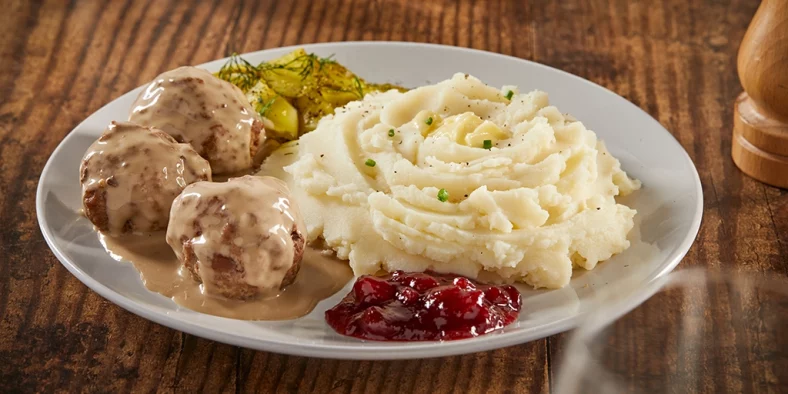
So, the menu is written and you’re now waiting for your bookings to come in. Now’s the best time to start sourcing ingredients. If you’re ordering in bulk, it’s likely you’ll look to trusted own brands like Fairway Assured for Christmas staples.
My recent favourite product has been the upcoming Fairway frozen mashed potato. Frozen mash is something I never used to consider, but this has changed my mind. If you’ve ever made mash and reheated it, you’ll know that it tends to have a weird taste to it. I’ve discovered that heating up Fairway Assured frozen mash tastes more like your classic fresh mash than fresh mash itself cooled and reheated. Fresh mash is sometimes hard to do in a busy commercial kitchen, so this is a great option.
It’s also great, wherever possible, to buy locally sourced products. Not only does this contribute to supporting smaller, local businesses but by adding these finer details to your menu, customers are more likely to enjoy their meal, knowing that it hasn’t travelled far to get to their plate.
It’s so important to build relationships with local food producers, such as cheese makers, butchers, bakers, game shooters and farmers. With game season already here, try sourcing some local produce to add to a terrine, which can be prepped and frozen for Christmas. I’ve made great friends with the farmer who used to make the butter for my business, and she’s actually working with me on my next pop-up. The relationships we build with our producers are vital for the reputation and success of the service we offer.
On top of this, it’s always good to network with other food businesses to help with finding new suppliers and staff to exchange ideas.
As a fellow chef, I know how tough this season can be and I hope that these ideas have served as solid starting points for you to begin planning and preparing for your Christmas season. In the next article, we’ll be looking at staffing and training your team.

Kirsty Brown is a freelance, private chef and writer. Currently, the executive chef for an independent nursery chain and forest school, The Railway Children. Kirsty also runs her own pop-ups, supper clubs, cooking classes, and micro-bakery, specialising in sourdough and global cuisine. Kirsty previously owned the acclaimed French-Yorkshire street food van, café, and event company, Très Bon Raymond.



